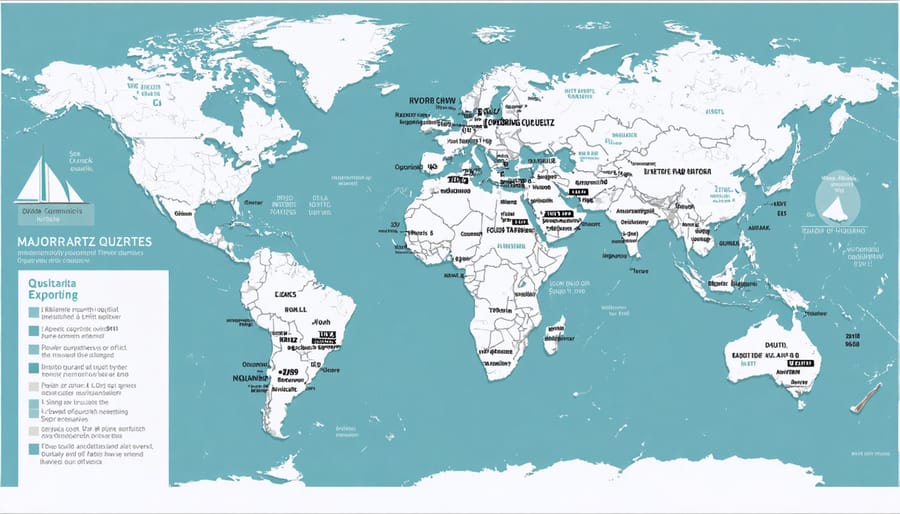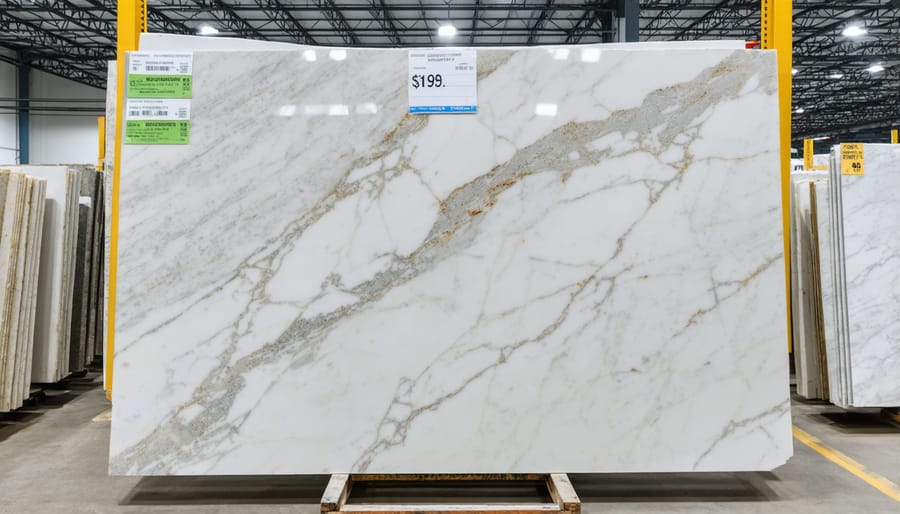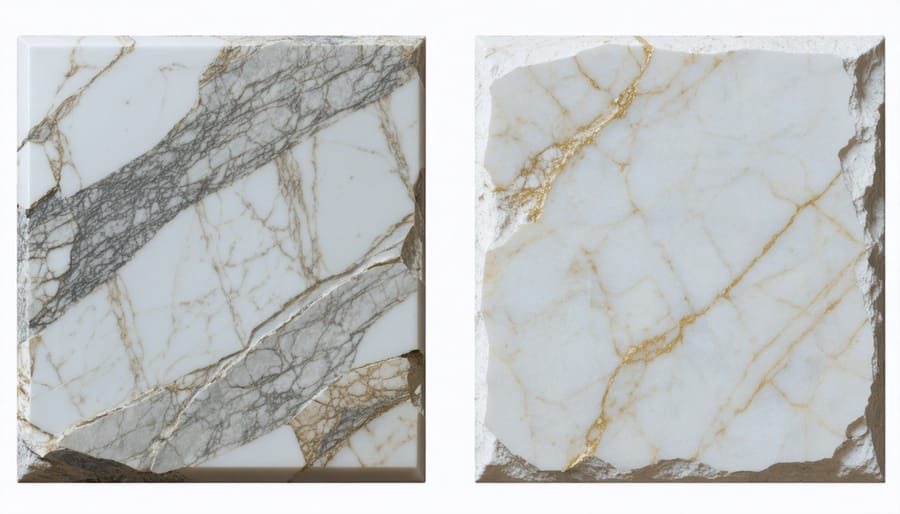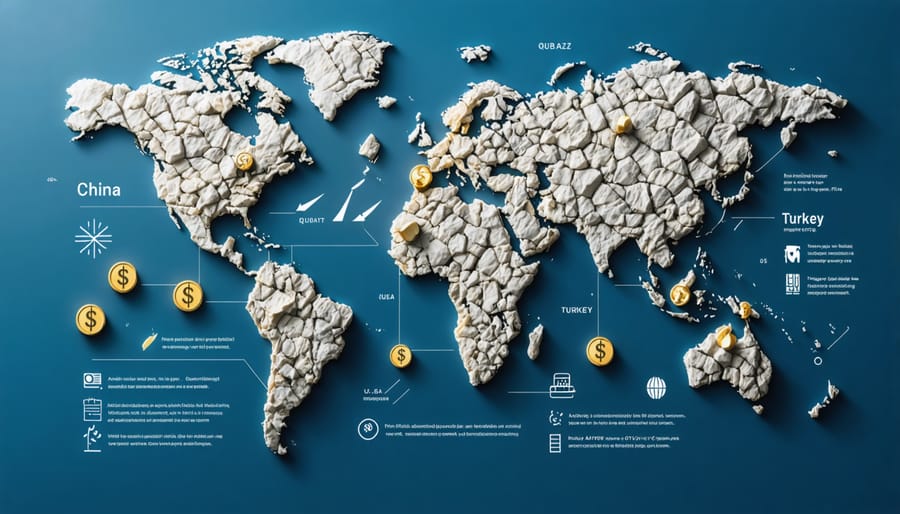Quartz tariffs have fundamentally reshaped the natural stone industry, driving up costs by as much as 300% for imported materials since their implementation in 2018. As quartz market trends continue to evolve, manufacturers, contractors, and homeowners face critical decisions about material selection and project budgeting. These trade policies, primarily targeting Chinese imports, have catalyzed domestic production while simultaneously creating supply chain challenges for U.S. fabricators and installers. Understanding these tariffs’ impact is essential for anyone involved in construction, renovation, or stone installation projects, as they directly influence material availability, project timelines, and bottom-line costs. While some manufacturers have shifted production to other countries to avoid steep duties, others have invested heavily in American manufacturing facilities, creating a complex marketplace that requires careful navigation for optimal purchasing decisions.
Understanding the Current Quartz Tariff Landscape
Recent Changes in Quartz Import Duties
The landscape of stone import regulations has seen significant changes in recent years, particularly regarding engineered quartz materials. As of January 2024, quartz surface products from China face combined antidumping and countervailing duties ranging from 323% to 428%, depending on the manufacturer. These rates represent a substantial increase from the previous year’s tariffs, which averaged around 287%.
India and Turkey, which emerged as alternative sourcing destinations, are now subject to new tariff investigations. The U.S. Department of Commerce implemented preliminary duties of 45-160% on Indian quartz imports and 5-25% on Turkish products in late 2023. These measures aim to address concerns about unfair trade practices and maintain market equilibrium.
For industry professionals and consumers, these changes have resulted in an average price increase of 30-40% for imported quartz surfaces compared to pre-tariff levels. Domestic manufacturers have expanded production capacity to meet increased demand, though market prices remain elevated due to higher raw material and production costs.
Project planners should note that these rates are subject to annual reviews and adjustments. Many suppliers now provide detailed country-of-origin documentation to ensure compliance with current regulations and help customers make informed decisions about material selection.
Countries Affected by Current Tariffs
Currently, the most significant quartz tariffs affect imports from China, which face duties of up to 301% when entering the United States market. These tariffs combine antidumping duties and countervailing duties, making Chinese quartz materials substantially more expensive for U.S. buyers.
India and Turkey have emerged as alternative sourcing destinations, though they now face their own scrutiny. India’s quartz exports to the U.S. are subject to duties ranging from 5% to 47%, depending on the manufacturer and specific product categories. Turkish manufacturers face similar challenges, with tariff rates varying between 5% and 25%.
Vietnam and Malaysia have seen increased export activity since the implementation of Chinese tariffs, though recent trade investigations suggest possible future tariff adjustments for these countries. Spain and Israel, traditional quartz exporters to the U.S. market, maintain standard duty rates below 5%, making them more competitive suppliers in the current trade environment.
Other notable exporters including Brazil, Canada, and European Union members typically face base tariff rates of 3-5%, though specific rates can vary based on trade agreements and product specifications. These varying tariff structures have significantly reshaped global quartz trade flows, with many buyers diversifying their supply chains to manage costs effectively.

Market Impact and Price Implications

Cost Changes for Consumers
The implementation of quartz tariffs has led to significant changes in consumer costs across the market. Based on current stone pricing, consumers can expect to pay 20-35% more for quartz surfaces compared to pre-tariff prices. For a typical kitchen countertop project of 40 square feet, this translates to an additional $800-1,200 in material costs alone.
These price increases have prompted many homeowners and designers to reevaluate their material choices. While premium quartz products remain popular for their durability and aesthetic appeal, budget-conscious consumers are increasingly exploring alternative materials such as granite, marble, or high-end laminate options.
The cost impact varies by product origin and manufacturer. Chinese-manufactured quartz, which previously dominated the market’s affordable segment, has seen the most dramatic price increases. European and domestic quartz products, while generally more expensive, have maintained more stable pricing but may experience supply chain pressures as demand shifts.
For renovation projects, timing can significantly affect costs. Many suppliers have implemented staged price increases to manage inventory transitions, creating opportunities for cost-conscious buyers to lock in lower prices during transition periods. Some retailers offer pre-tariff pricing on existing stock, though these inventories are typically limited.
To manage these increased costs, consumers are adopting various strategies, including mixing materials in their projects, opting for thinner slabs where appropriate, or choosing alternative edge profiles that require less material. Some are also exploring remnant pieces for smaller projects to achieve significant savings while still enjoying the benefits of quartz surfacing.
Supply Chain Disruptions
The implementation of quartz tariffs has created significant ripples throughout the stone industry’s supply chain, leading to notable global supply chain impacts that affect both suppliers and consumers. Material availability has become increasingly unpredictable, with many distributors reporting extended lead times of 8-12 weeks compared to the previous standard of 3-4 weeks.
Manufacturers have responded by diversifying their sourcing strategies, often establishing new supply relationships in countries not affected by the tariffs. This transition period has resulted in temporary shortages of certain popular quartz varieties and colors, particularly those traditionally sourced from regions subject to the tariffs.
For project planners and designers, these disruptions necessitate more flexible timelines and potentially alternative material selections. Some distributors have begun maintaining larger inventories of domestic and tariff-free imported materials to ensure consistent availability, though this practice has increased storage costs and, ultimately, retail prices.
The ripple effects extend beyond just quartz materials. As demand shifts to alternative surfaces like granite, marble, and engineered alternatives, these markets have also experienced supply pressure. This interconnected impact demonstrates how tariffs on one material can reshape the entire stone industry’s supply dynamics.
To navigate these challenges effectively, industry professionals recommend:
– Planning projects with longer lead times
– Maintaining flexible material specifications
– Working closely with suppliers to understand real-time availability
– Considering domestic alternatives when possible
– Establishing relationships with multiple suppliers to ensure backup options
Alternative Materials and Market Adaptations
Domestic Quartz Options
As tariffs impact imported quartz prices, many buyers are turning to domestically produced alternatives. American quartz manufacturers have expanded their operations significantly, offering high-quality engineered stone products that compete effectively with international options. Leading U.S. manufacturers like Cambria, LG Viatera, and Caesarstone’s U.S. facilities produce a wide range of colors, patterns, and finishes that meet or exceed international quality standards.
Domestic quartz options typically feature advanced manufacturing processes, strict quality control, and shorter supply chains, resulting in more reliable delivery times and consistent product quality. Many U.S. manufacturers have invested in state-of-the-art facilities that produce slabs using environmentally conscious practices and maintain rigorous safety standards.
Price points for domestic quartz can vary significantly, with premium lines competing with high-end imported materials and value-oriented options available for budget-conscious projects. While domestic products may have higher initial costs compared to some imported alternatives, factors like reduced shipping times, lower transportation costs, and easier warranty claims often provide long-term advantages.
American manufacturers also offer extensive design support, technical assistance, and local distribution networks, making it easier for contractors and designers to specify and source materials. Many domestic producers provide comprehensive warranties and maintain readily available replacement inventory, addressing common concerns about long-term product support and maintenance.
Other Natural Stone Alternatives
With the recent impact of quartz tariffs, many homeowners and designers are exploring alternative natural stone options that offer similar aesthetic appeal and durability. Granite remains a popular choice, offering exceptional durability and unique patterns formed by natural crystallization. Available in countless colors and patterns, granite provides excellent heat resistance and scratch resistance at competitive prices.
Marble continues to be a timeless option, prized for its elegant veining and classic appeal. While requiring more maintenance than quartz, marble’s natural beauty and historical significance make it a sought-after choice for luxury installations. For those seeking a more budget-friendly alternative, limestone offers a sophisticated, uniform appearance ideal for both contemporary and traditional designs.
Soapstone presents another compelling option, featuring a distinctive soft feel and natural dark coloring that deepens over time. Its non-porous nature makes it particularly resistant to stains and bacteria, perfect for kitchen applications. Meanwhile, travertine offers a Mediterranean aesthetic with its characteristic pitted surface and warm tones, often available at lower price points than quartz.
For modern applications, onyx provides dramatic translucent effects when backlit, creating stunning feature walls and countertops. Additionally, slate’s natural cleft texture and rich color variations make it an excellent choice for both indoor and outdoor applications, offering superior durability at competitive prices unaffected by current tariff regulations.

Future Outlook and Industry Predictions
As the quartz industry continues to evolve, several key trends and developments are likely to shape its future landscape. Industry analysts predict that the current tariff situation may undergo significant changes within the next few years, particularly as international trade relationships shift and new manufacturing hubs emerge in different regions.
Many experts anticipate a gradual diversification of quartz manufacturing beyond China, with countries like India, Turkey, and Vietnam increasing their production capacity. This geographical shift could help stabilize prices and reduce the impact of existing tariffs on the U.S. market. Additionally, domestic manufacturing in the United States is expected to expand, though this growth may take several years to significantly influence market dynamics.
Technological advancements in quartz production are likely to play a crucial role in future developments. New manufacturing processes may help reduce production costs and improve material quality, potentially offsetting some of the financial impacts of tariffs. Innovations in recycled content and sustainable manufacturing practices are also expected to gain prominence, addressing growing environmental concerns.
Market analysts forecast that the demand for quartz surfaces will continue to grow despite tariff challenges, driven by the material’s durability and low maintenance requirements. However, this growth may be accompanied by increased competition from alternative materials, including porcelain slabs and new engineered surfaces that offer similar benefits at potentially lower price points.
For consumers and industry professionals, the coming years may bring more pricing stability as supply chains adjust and new sourcing strategies take hold. Industry experts suggest that while tariffs will remain a significant factor, their impact might be partially mitigated by these market adaptations.
Looking ahead, the industry is likely to see increased transparency in pricing structures and origin labeling, helping buyers make more informed decisions. Trade associations and industry groups are expected to play a larger role in shaping policy discussions and potentially influencing future tariff negotiations, working toward more balanced trade solutions that benefit both domestic and international stakeholders.
The implementation of quartz tariffs has significantly reshaped the natural stone industry landscape, creating both challenges and opportunities for stakeholders across the market. Understanding these tariffs’ impact is crucial for making informed decisions about stone selection and project planning. While the increased costs of imported quartz have led to higher prices for consumers, they’ve also stimulated domestic production and opened doors for alternative materials.
For industry professionals and consumers alike, staying informed about tariff developments and maintaining flexibility in material choices is essential. Consider exploring domestic quartz options, investigating alternative materials like granite or marble, or working with suppliers who offer both imported and locally-sourced materials to optimize costs. Regular consultation with suppliers about pricing trends and maintaining open communication with clients about budget implications will help manage expectations and project costs effectively.
As the market continues to evolve, successful navigation of the quartz tariff landscape requires strategic planning, material flexibility, and strong supplier relationships. By understanding these dynamics, stakeholders can make better-informed decisions while maintaining project quality and managing costs effectively.










